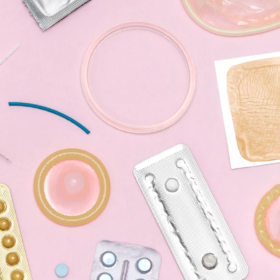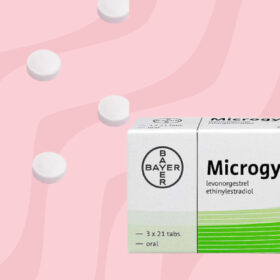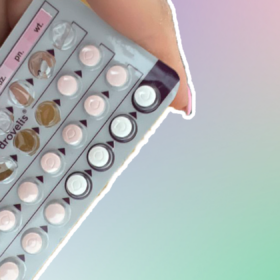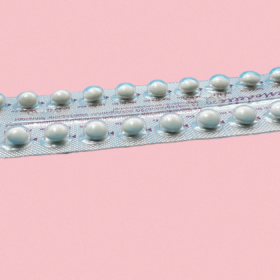
Our most popular contraceptives: IUS v combination pill
Choosing the right contraception for you is an important one and a decision, that we are sure you are aware of by now, can often take a while to figure out.
By highlighting how each method works, what the advantages and disadvantages are for both, and what our reviewers say, we hope it helps you get to the stage where you have found your perfect match that little bit quicker.
In this piece, The Lowdown brings you information, comparisons and reviews of the IUS (or coil) and the combination pill, as our users’ favourites.
Of course, there are many different brands of each, and symptoms and experiences will vary, but we hope that this article brings you a generic round up of both to help you make a better decision on which may be the best one for you.
At a glance: the advantages and disadvantages
- It is more than 99% effective at preventing pregnancy. This means that over the course of 1 year, less than 1 in 100 women will get pregnant whilst using it
- Once it is in, you do not have to do anything until it needs to be replaced
- It works for between 3 to 8 years, depending on the brand.
- Periods usually become less painful, lighter and shorter and may become less frequent or stop altogether
- Your fertility returns to what is normal for you as soon as it is removed – meaning it is possible to get pregnant straight away
- It is not affected by other medicines
- It might be a good option if you cannot take the hormone oestrogen
- The Mirena, Levosert and Benilexa coils can also be used as part of hormone replacement therapy (HRT), which is used in the management of menopausal symptoms
- Hormonal coils are the first line treatment for heavy periods and can be used to treat endometriosis and adenomyosis
The Combined Pill – Advantages
- With perfect use (using the method correctly all the time) the pill is over 99% effective, and with typical use it is around 91% effective
- It usually makes your periods regular, lighter and less painful
- You have the choice to skip a monthly bleed by using continuous pill taking
- It can improve acne
- It can reduce symptoms of premenstrual syndrome (PMS)
- It can help manage symptoms associated with polycystic ovary syndrome (PCOS), including acne, abnormal hair growth and irregular or no periods
- It can reduce the risk of recurrent endometriosis after surgery
- It reduces the risk of endometrial, ovarian and colorectal cancer
- You have control over when to stop taking it (although it’s worth discussing with your healthcare professional if you wish to avoid pregnancy or switch methods)
- As soon as you stop taking it your fertility will return to what is normal for you.
The IUS – Disadvantages
- You will need an appointment with a doctor or nurse and will need to have a pelvic examination to have the IUS fitted
- There is a small risk of infection when it is fitted and you may be advised to have a test for STIs beforehand
- There is a very small risk of damage to the womb when your IUS is fitted (1 in 1000)
- There is a small chance the IUS can move or be pushed out of the womb (1 in 20). After fitting, you will be taught how to check your coil threads to make sure it’s still in place
- In the rare chance you do become pregnant while using the IUS, there is a small risk of an ectopic pregnancy (a pregnancy outside of the womb)
- You may get period type pain and some light bleeding after it is fitted, which should improve
- Some women experience irregular bleeding or ‘spotting’, especially in the first 3-6 months which usually settles
- Some women experience headaches, acne and breast tenderness which usually improve after the first few months. Some women experience changes in libido and mood.
- Rarely, women can develop small fluid filled cysts on their ovaries. These are usually harmless and resolve without treatment
- You will need to have an appointment with a doctor or nurse for it to be removed – although this is quicker and easier than an insertion
- The IUS does not protect you from sexually transmitted infections (STIs), so for this you need to use condoms as well.
The Combined Pill – Disadvantages
- You must remember to take it every day, preferably at the same time
- Missing pills, vomiting or severe diarrhoea can make it less effective
- Some medicines can interact with the pill, meaning it might not work properly. If you are taking other medicines then you should check this with your doctor, nurse or pharmacist
- Irregular bleeding and spotting is common in the first few months of using the pill, but this usually settles
- Some women experience headaches, breast tenderness or nausea which usually improve after the first few months. Some women experience changes in libido and mood.
- It can increase blood pressure
- There is a small increased risk of developing a blood clot when taking the combined pill. This means a blood clot in the leg or lung, or a heart attack or stroke. These risks are very small and the pill is considered safe in most healthy women.
- The pill can slightly increase the risk of developing breast and cervical cancer. This reduces with time after stopping the pill. And please remember to attend your cervical screening!
- The pill does not protect you from sexually transmitted infections (STIs) so for this you need to use condoms as well.
The stats
What do our reviewers say?
One difficult thing about contraception is that everyone can react differently to the same product, meaning it is tricky to get a good idea about what might be best for you. Here, we have collated user feedback so that you hopefully have a better idea of what the IUS and combined pill might mean for you.
For the IUS, the most common immediate side effect is cramping, with around 63% of reviewers reporting pain. For the combined pill, the most common immediate side effect is tender breasts with 53% of reviewers reporting a change.
Almost half (46%) of reviewers say the IUS stops their period completely, while 17% said their periods became irregular and 21% said they became lighter. For the combined pill, 46% experience lighter bleeds, with 14% reporting no change and 7% saying they were heavier.(from data taken on 21 May 2024)
IUS (hormonal coil) reviews
Kyleena – ‘I feel like a different person’
“I came off of Gederal 30/150 and got the hormonal coil, and can’t begin to explain how much better I feel, not to sound cliché but feel like a different person, I used to have anxiety over things I knew I sorta shouldn’t of had anxiety over and would wake up in the most foul mood for no reason whatsoever and now both those two things have completely gone. I also haven’t had a period yet and have had it for 4 months, only just a few random spots of blood on and off. My skin has also cleared up massively where as on the pill I was coming out in huge boil-like spots. The insertion is ever so slightly painful and I had bad cramps for about 2 days but now they’re gone too. I also noticed a huge difference in how hungry I’d get. On the pill I’d eat a big meal and fed hungry still so would really want to eat more and often did, however since being on the coil I’ve noticed that doesn’t happen anymore, like I’m only really hungry when I know I should be.”
Mirena – ‘I would highly recommend’
“I have used the coil for best part of 20 years after my now 20 year old son was born. I would highly recommend, after trying the pill before this, hated that!”
Combined pill reviews
Rigevidon – ‘Constantly in a bad mood’
I have been taking this for a few weeks now and have already had a bad experience. I am constantly in a bad mood and my discharge has gotten much worse and my breasts are constantly tender.
Eloine – very happy”I have been taking the Eloine pill for 10 months now and it has been pretty good. Not much has really changed for me which is great. My periods are the same (if not lighter) , my skin has stayed clear and I haven’t lost or gained any weight. The only thing I have noticed a change in since taking Eloine is a slight increase in anxiety and being more emotional than I used to be. However, these aren’t too extreme and are manageable. Overall i’m very happy with the Eloine pill 😊”
Millinette – ‘The best yet’
“I have been on 4 type of birth control before this and this is the best yet. The effects I’ve experienced are minimal when on this pill. I in the first two weeks of taking it experienced some nausea and dizziness but nothing too extreme. I had a lot of problems previously with sex drive, headache and mood swings on other pills. This pill is 10/10 IMO.”
The IUS – how it works
The IUS – or the hormonal coil – is a small plastic device that is inserted into your womb by a doctor or nurse. It prevents pregnancy by releasing a synthetic form of the hormone progestogen, similar to the one produced by the ovaries. This makes the fluid at the cervix (neck of the womb) thicker and therefore harder for sperm to get through. It also thins the lining of the womb so a fertilised egg can’t implant and in some women stops them ovulating.
The insertion is a procedure that requires a pelvic exam and can be an uncomfortable procedure. Depending on the type of IUS, once it is in it can last between 3 to 8 years.
It can be fitted at any time during your menstrual cycle if you are definitely not pregnant. If fitted within the first 7 days of your cycle, you will be protected against pregnancy right away. If fitted at any other time, it is advised you use another form of contraception, such as condoms, for the next seven days.
Most people with a uterus can use an IUS, including those who have never been pregnant. An IUS can also be fitted in the first 2 days after giving birth, (or after 4 weeks if not within 48 hours of birth) and immediately after an abortion.
The combined pill – how it works
The combined pill, the one usually referred to as just ‘the pill’, contains oestrogen and progestogen, similar to the hormones produced by the ovaries. The combined pill prevents pregnancy by stopping you ovulating (releasing an egg each month), thinning the lining of the womb and thickening the mucus in the neck of the womb, making it harder for sperm to reach an egg.
Traditionally, combined pill packs contain 21 tablets which you take consistently before taking a 4 to 7 day break. During this pill break you might have a withdrawal bleed which can be caused by a drop in hormone levels. You might experience symptoms similar to your period, but it is usually a lot lighter and shorter.
Nowadays, you can also take the combined pill as a tailored regimen. This may include taking the pill for 21 days and stopping for 4 days, taking 2 or 3 packets back to back without a break, or taking the pill continuously without a break. For more information speak to your healthcare professional.
Our medical review process
This article has been medically reviewed for factual and up to date information by a Lowdown doctor.






